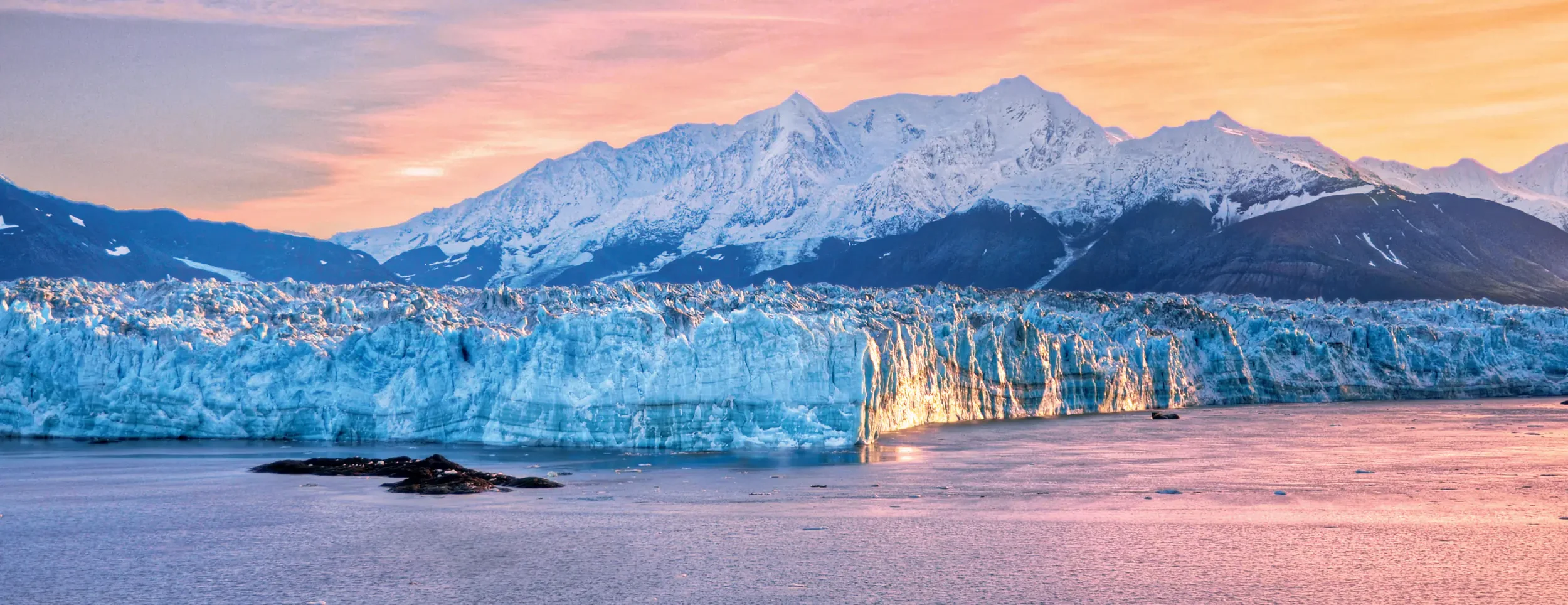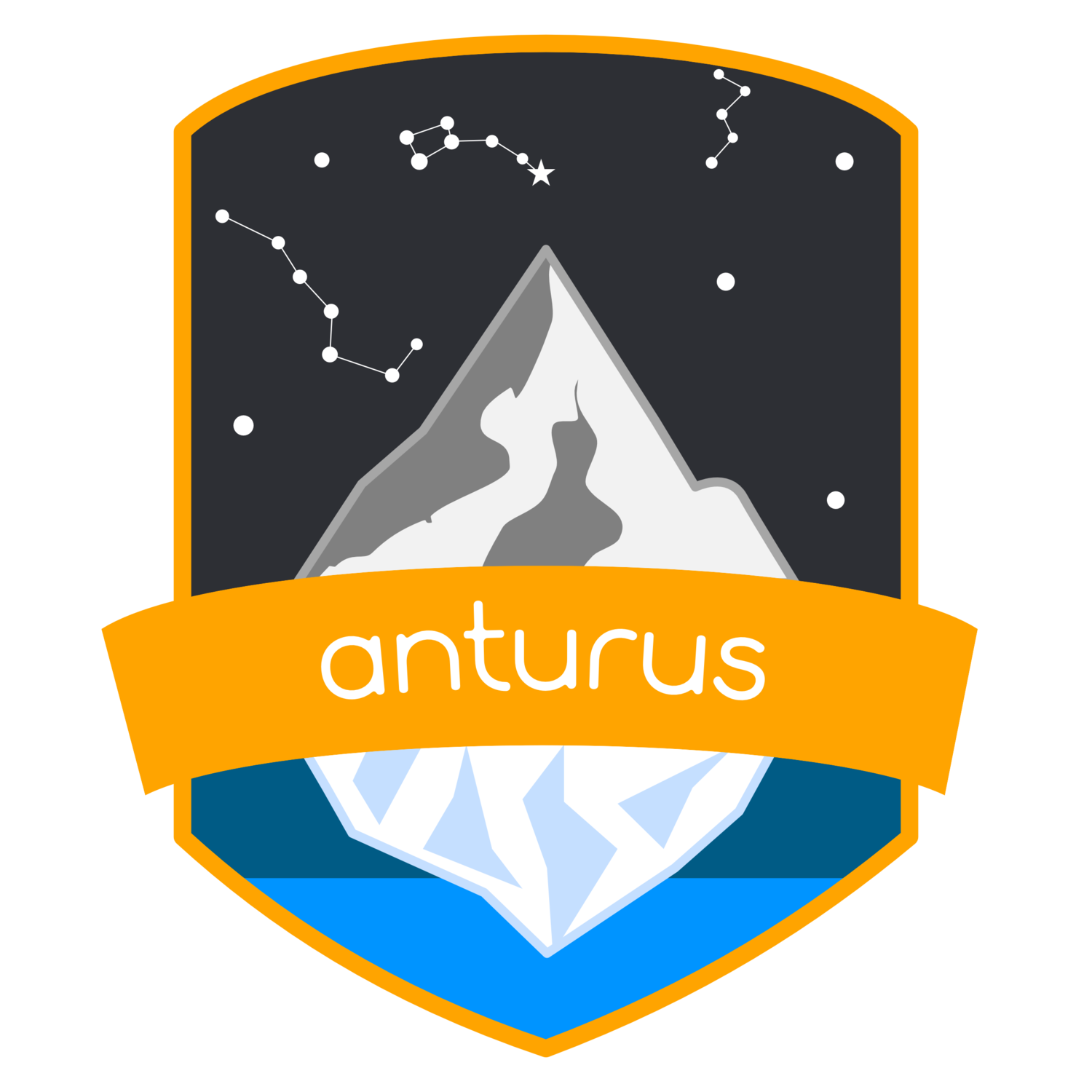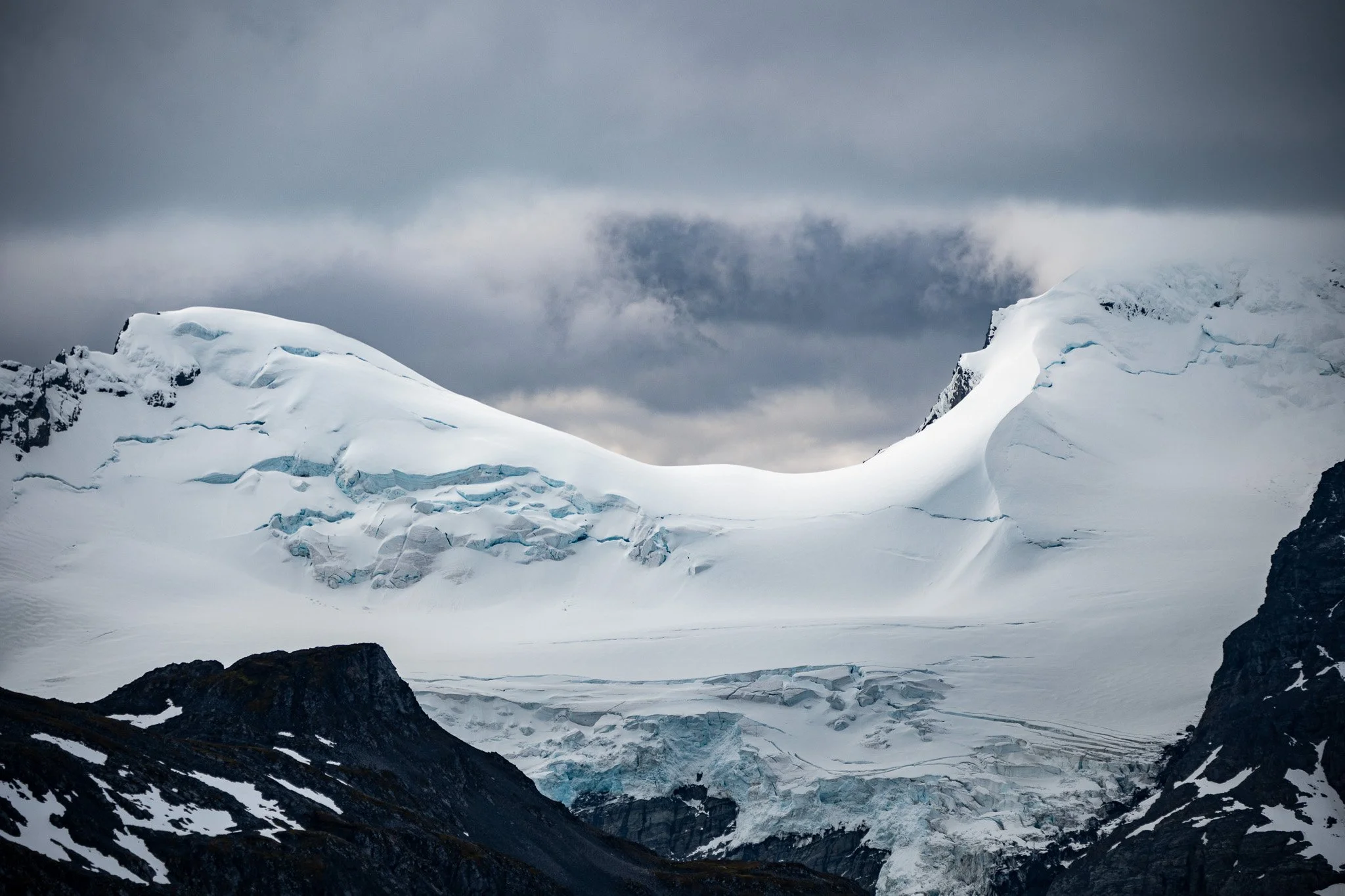
NO RETREAT: The Glacier That Is Still Growing
(Development project)
Overview.
Most glaciers are shrinking, fast. Since 2000, the world’s glaciers have lost about 273 billion tonnes of ice per year on average, with the rate of loss increasing in the last decade. That melt has already added roughly 18 mm to global sea level. In Europe specifically, every glacier region saw net loss in 2024, with record mass loss in Scandinavia and Svalbard and another severe year in the Alps. Eight of the ten worst global mass-balance years have occurred since 2010.
Hubbard Glacier is the outlier that proves the rule. Unlike most tidewater glaciers, Hubbard (Alaska) has been advancing for more than a century, driven by exceptional snowfall over its vast catchment and a bed geometry that “pins” the ice front in place. Twice—in 1986 and 2002—its advance blocked Russell Fiord, briefly turning it into a lake before the ice dam failed in dramatic outburst floods. This behaviour doesn’t mean Hubbard is safe from warming; it means its response is delayed by local conditions, giving scientists a rare, large-scale case to study how accumulation, ice flow, ocean contact and calving interact.
Why Hubbard is important: it helps test and improve glacier models, clarifies thresholds and feedbacks in ice–ocean systems, and informs hazard forecasting—from ice-dam formation and outburst floods to freshwater pulses and sea-level contributions when pinning conditions change. In a world of retreating ice, Hubbard is a natural laboratory for understanding resilience, delay, and the risk of abrupt change once stabilising factors are lost.
Film.
No Retreat is a short, powerful documentary that follows mountain athlete Calum Muskett and science communicator Huw James to one of the rare glaciers still advancing — Alaska’s Hubbard Glacier.
This is a place where ice meets ocean with force. The team sails narrow fjords to reach the face, steps onto the glacier when conditions allow, maps its surface with drones, and sets a time-lapse camera to watch the ice move. They meet the people who work these waters and the scientists who study snowfall, bedrock, and calving — asking a clear question: why is this glacier still pushing forward when most are not?
Across this coast, Hubbard leaves visible clues — temporary ice dams, fresh bergs, shifting shorelines. They are striking, vital, and vanishingly rare. Read well, they offer practical lessons: how delayed change works, how sudden shifts can follow long calm periods, and how to plan for risk in places where ice and ocean are tightly linked.
Through movement, storytelling, and on-the-ground science — supported by reliable Rab Equipment for cold, wet conditions — No Retreat shows that understanding a growing glacier isn’t a curiosity; it’s useful climate work. This film invites us to look closely, learn from what’s advancing today, and back the people and tools that help communities prepare before “not yet” becomes “too late.”
“From 2000–2023, glaciers worldwide lost ~273 billion tonnes of ice per year, and the loss rate increased by ~36% in the last decade.”
The Purpose.
THE PURPOSE: The purpose of No Retreat is to spotlight one of the planet’s rare outliers—Alaska’s Hubbard Glacier, which is still advancing—and use it to explain how glaciers work, why most are shrinking, and what a “delayed” response to warming really means. By turning a complex anomaly into clear, public-facing insight, the project aims to help audiences, decision-makers, and outdoor communities read the signals of change earlier and act with fewer surprises.
THE SCIENCE: Glaciers live by a balance: snow in versus ice out. Worldwide, that balance has tipped towards loss—but Hubbard keeps moving forward because of exceptional snowfall over a vast catchment and bedrock geometry that pins the ice front. Its behaviour creates visible, measurable events—temporary ice dams, outburst floods, calving cycles, and shorelines that shift—that let scientists test models of thresholds, feedbacks, and lags in ice–ocean systems. Understanding this “late responder” doesn’t disprove warming; it shows how hidden buffers can hold for years, then fail quickly. Those mechanics are the blueprint for better forecasting of sea level, freshwater pulses, and coastal hazards.
THE GOALS:
Translate an outlier into action: turn Hubbard’s lessons into simple tools and messages that improve risk planning where people live with ice and rising seas.
Strengthen early-warning literacy: help audiences recognise signs of delayed change—so communities can prepare before thresholds flip.
Support credible climate communication: show that a glacier still advancing fits the bigger warming story—and helps us model the future more accurately.
Champion practical readiness: encourage investment in monitoring (from field sensors to time-lapse and drones), better local forecasting, and kit, skills, and protocols that keep people safer in fast-changing cold environments.
In short, No Retreat uses a growing glacier to make climate risk clearer, earlier, and more actionable.
“Hubbard lets scientists watch snowfall, ice flow, ocean contact, and calving interact at full scale—insight we can’t get from shrinking glaciers alone.”
Film.
DURATION: 30 minutes
FILM TEAM: Science StoryLab (Dir. Huw James; Athlete Calum Muskett)
PARTNER: Rab Equipment
LOCATIONS: Yakutat Bay, Disenchantment Bay, and Russell Fiord (Alaska). Access by boat to Hubbard’s calving face; safe on-glacier sections for ground shots; elevated headlands for timelapse and survey. Staging in Yakutat.
OUTPUT: A short expedition film that brings clear, practical understanding to a rare outlier: an advancing glacier. We sail to Hubbard, step onto the ice when conditions allow, map its surface with drones, install a timelapse camera, and speak to scientists and local crews. The result blends clean visuals with plain-spoken explanations, showing why Hubbard moves forward when most glaciers retreat—and what that teaches us about risk and readiness in a warming world.
SCIENCE: Grounded in glaciology and ice–ocean dynamics. The film explains mass balance (snow in vs. ice out), the role of bedrock pinning points, heavy snowfall over a vast catchment, calving processes, temporary ice dams, and outburst floods. We connect field observations to the bigger picture: thresholds, feedbacks, and delayed responses that can flip quickly—insight that strengthens forecasting for sea level, freshwater pulses, and coastal hazards.
PURPOSE: Use a growing glacier to make climate risk clearer and earlier. By turning Hubbard’s anomaly into accessible knowledge, the film encourages better local planning, smarter monitoring (timelapse, drones, sensors), and credible climate communication. It’s a call to back the people, tools, and decisions that keep communities safer where ice and ocean meet.
SHOWN: Outdoor, mountain, and environmental film festivals; partner and NGO screenings; education and policy events; Rab channels and athlete talks. Designed for use alongside short social edits and stills for outreach, safety briefings, and public engagement.
“A glacier that still moves forward doesn’t disprove warming—it shows how hidden lags and thresholds work, and how quickly they can flip.”
“Glaciers account for roughly a quarter to a third of observed sea-level rise.”
Collaborators.
RAB EQUIPMENT × No Retreat
Rab builds kit for real weather and real work. No Retreat takes that kit to Alaska’s Hubbard Glacier—cold seas, wet air, shifting ice—to show what an advancing glacier can teach us in a warming world. This is a clean, science-led expedition story with practical takeaways. Perfect fit.
Why Rab + No Retreat
Authentic conditions: maritime cold, spray, and wind-chill are where Rab systems shine.
Useful climate story: turns a rare advancing glacier into clear, public-facing insight (lags, thresholds, local hazards).
Credible protagonists: mountain athlete Calum Muskett + science communicator Huw James operating simply and safely.
How Rab can be involved
1) Financial Support
Core Production Support (cash)
Helps cover the essentials — travel, access, crew, and baseline post.Finishing & Delivery Support (cash)
Contributes to edit, grade, sound, captions, and final masters.Distribution & Impact Support (cash or media value)
Assists with release, promotion, subtitling, and basic impact materials.Events & Education Support (cash or in-kind)
Backs screenings, Q&A sessions, and a light educational resource pack.
2) Kit Support
Shell & insulation: Latok/Muztag shells, Mythic/Infinity/Generator insulation, Torque/Khroma softshell layers.
Next-to-skin & accessories: Merino/synthetic base layers, Power Stretch gloves/liners, Guide Lite gloves, hut booties, beanies.
Hands-on tasks: sailing transfers, glacier travel, drone ops, time-lapse installs—continuous wear-and-tear validation.
Feedback loop: detailed kit notes (wet-out, drying time, dexterity, packability) + post-trip Service Centre wash/repair story.
3) Platform Amplification
Primary film (30 min) on Rab’s site and YouTube.
Shorts package (6–8 x 30–60s) for Instagram/TikTok/LinkedIn: “Why is this glacier advancing?”, “What’s an ice dam?”, “Drone map in 30 seconds.”
Photo + blog features on The Mountain People: kit list, field notes, “read the glacier” explainer.
Email + retail screens: launch week hero slot; in-store loops with QR to the film.
4) Mission Integration (Responsibility in practice)
Rab Service Centre: care/repair content tied to salt spray, persistent damp, and field maintenance.
Materials transparency: simple callouts on shell/insulation fabrics and lifecycle impact.
Rental/Reuse: promote renting expedition pieces; encourage repair over replacement.
5) Community Events & Education
Screenings + Q&A at Rab sites, Kendal-style festivals, and partner venues.
Mini-workshops: “cold-wet layering,” “glacier basics,” “care & repair bar.”
Schools/uni pack: 5-slide teacher deck + 90-sec explainer short (“Why one glacier still advances”).
Deliverables (from the film team)
1× Hero film (30 min), 1× Trailer (60–90s)
6–8× vertical shorts, 12–16× stills (product + environment)
2× feature articles (kit in the field; science explained)
1× education pack (slides + script), 1× screening kit (poster, copy, assets)
Kit feedback report to Rab Product/Service Centre
Rights & Credit
Rab-brandable master + cutdowns with logo slates
Global digital use across Rab web, social, email, retail, and events; stills for product pages and stores
Athlete/crew bios and pull-quotes included
In one line: No Retreat turns hard weather, honest kit, and good science into a clear story people can use—exactly what Rab stands for.
THE OULTLINE
🎬 Prologue (0:00–3:00) – “No Retreat”
Location: Yakutat Bay → Disenchantment Bay (Alaska)
Visuals: First light over a grey sea; boat cutting through brash ice; a distant calving boom; spray and birds lifting off the water.
Voiceover (Poetic):
“Where most ice falls back, one wall still moves forward. Not a promise—just a pause. Listen, and it will tell you why.”
Piece to Camera (Huw James):
“Nearly every glacier on Earth is retreating. Hubbard is one of the rare exceptions. We’re here to show what that means—and what it doesn’t.”
Scientific Message:
Glaciers advance or retreat based on mass balance (snow in vs. ice out). Hubbard’s advance is driven by heavy snowfall over a vast catchment and a bedrock geometry that “pins” the ice front—delaying its response to warming.
🌊 Chapter 1 (3:00–9:00) – “Edge of the Blue Wall”
Locations: Disenchantment Bay calving face; Russell Fiord viewpoint
Interviewees: Local boat captain / park ranger (glacier safety, seasons)
Science Content:
Tidewater glacier dynamics: calving cycles, submarine melt, buoyancy.
Ice-dam history at Russell Fiord (formation, failure, outburst floods).
Lines to Camera (Huw, at the face):
“Advance doesn’t mean immune. It means the forces pushing forward are, for now, stronger than those pulling back.”
Athlete VO (Calum Muskett):
“You think a glacier is still—until the first crack runs through your chest.”
Visuals: Close mic’d rumbles; slow pans across crevasses; calving in real time; shoreline strandlines marking past water levels.
🛰️ Chapter 2 (9:00–15:00) – “Reading the Ice”
Locations: Stable headland for time-lapse install; safe on-glacier zone for drone mapping
Interviewees: Glaciologist / university partner (remote or on location)
Science Content:
Mapping surface flow with drones; establishing time-lapse to capture short-term dynamics.
Accumulation zones vs. ablation zones; equilibrium line altitude; why Hubbard’s is unusually low for now.
Lags and thresholds: why delayed systems can flip quickly once pinning or snowfall regimes change.
Lines to Camera (Huw):
“A growing glacier doesn’t disprove warming. It shows us the hidden buffers that can hold—until they don’t.”
Visuals: Drone orthomosaic snippets; timelapse setup; data overlays on moving seracs; simple on-screen graphics: “Snow In / Ice Out.”
🌧️ Chapter 3 (15:00–21:00) – “Signals on the Coast”
Locations: Russell Fiord narrows; shoreline transects; small fishing dock
Interviewees: Fisher / local guide; hazard planner (remote)
Science Content:
What advancing ice means for people: temporary lakes, freshwater pulses, navigation hazards.
Practical forecasting: watching break-up lines, reading berg distribution, using simple time-lapse and community observations.
Lines to Camera (Huw, marking a strandline):
“Change leaves marks. Read them right and you buy time. Misread them and you lose it.”
Athlete VO (Calum):
“On rock or ice, it’s the quiet shifts you plan for.”
Visuals: Shoreline comparison shots; berg counts; locals handling lines in tidal surge; simple map animation of past dam closures.
🧭 Chapter 4 (21:00–27:00) – “What an Outlier Teaches”
Locations: Chart table in cabin; quiet headland at dusk
Interviewees: Scientist wrap-up (clips); local ranger
Science Content:
Hubbard as a natural laboratory for thresholds/feedbacks that matter globally.
Transferable lessons: early-warning literacy, better local risk planning, and honest climate communication.
Lines to Camera (Huw):
“We don’t come here looking for comfort. We come for a clearer picture—so the next community downstream can plan with fewer surprises.”
Visuals: Timelapse playback; data-to-reality match cuts (map ↔ calving face); kit hang-drying, notes being logged; calm, deliberate pacing.
✨ Epilogue (27:00–30:00) – “Hold Fast, Read Early”
Voiceover (Poetic):
“Some ice moves forward, even now. Not to reassure us—but to show us how change travels. Learn the pattern, and you meet it sooner.”
Visuals: Final wide of the glacier face under cloud; time-lapse day-to-night; boat turning for home.
Call to Action (On-screen):
“Understand the outliers. Plan for the flip. Support the people reading ice at the front line.”
[QR / link: film page with explainers, kit care & repair, and simple ‘read the glacier’ resources]
Example Project.
Downstream is a documentary film produced in collaboration with Protect Our Winters and Icebreaker. Our team at Science StoryLab handled the production, direction, filming, editing, and photography. The film explores the journey of water from glaciers to rivers, illustrating the impacts of climate change on these crucial ecosystems. It has been presented at venues like the EU Parliament, UNESCO, and the United Nations, and is Protect Our Winters Europe's flagship project for the International Year of Glaciers. We hope it contributes meaningfully to the conversation on climate action.






